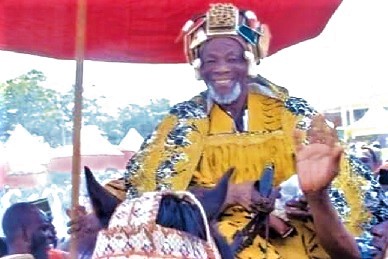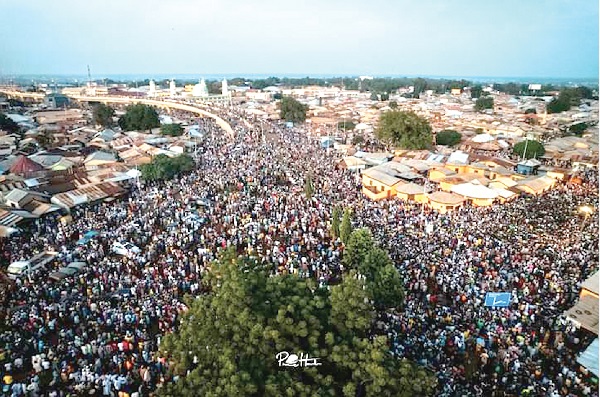
Damba Festival: Rich cultural heritage of Mole-Dagbon
On Sunday, October 16, descendants of the Mole-Dagbon Kingdom, comprising Mamprusis, Mossis, Dagombas, Nanumbas and Gonjas, climaxed the annual Damba Festival with an impressive display of their rich cultural heritage.
The week-long festival was climaxed with a grand durbar at the forecourt of the palaces of the various overlords and paramount chiefs.
Advertisement
Northern Ghana came to a standstill last Sunday evening, as the people poured onto the streets in their numbers to celebrate this year’s Damba Festival with pomp.
The culture of the kingdom was also on display as chiefs rode on horsebacks with their retinue, made up of drummers and traditional warriors, displaying their mastery in musketry.
The festival
Celebrated by the people of Dagbon, Nanumba, Mamprugu, Gonja and some parts of the Upper West Region, Damba is marked on the third month of the Islamic calendar, Rabia al-Awwal.
The festival is celebrated to mark the birth and naming of Prophet Mohammed, but the actual content of the celebration is a glorification of chieftaincy.
The festival, therefore, starts on the 10th day of the month of Damba with the “Somo” Damba, followed by the ‘Naa’ King’s Damba on the 17th day, with the “bielkulsi”, which is the climax of the celebration, coming off on the 18th day of the month of Damba.
Activities that mark the festival include prayers and fasting, as well as a procession of people on horsebacks amid drumming and dancing.
Originally linked to Islam to mark the birth of Prophet Mohammed, the festival has gradually taken on a traditional rather than an Islamic tone.
Atmosphere
The atmosphere in and around the precincts of the palaces, which were the venues for the celebration, was filled with joy and excitement as the people paid homage to the overlords and chiefs, as part of the activities to mark the celebration.

Men and women, as well as children, dressed in smock and other northern traditional apparel, went on a procession, which signified the end of the festival, through some principal streets of the towns amid drumming and dancing.
The festival also attracted some Europeans and Americans.
For instance, the Gbewa Palace in Yendi, seat of the Overlord, Ya-Na Abukari II, was filled with excitement and joy as important personalities, including Members of Parliament (MPs), ministers and heads of institutions, paid homage to him.
A reveler, Saani Abdulai, said the festival enabled them to give thanks to their maker for his mercies throughout the year.
"Damba is one of the significant festivals in Dagbon, and it makes us reconnect with our ancestors and the good old days," he said.
A tourist, Angela Adams, said "I have travelled all the way from the US to come and witness the rich culture of the people of Dagbon, I have been joining the people for the celebration for the past three years."
Significance
Explaining the significance of the festival, a traditional historian, Badigamsira Inusah Abdul-Majeed, said aside from the merry making, the festival was meant to foster socialisation among family members as well as settle their differences.
He added that it also educated the public on the cultural values of the northern tribes, particularly the Mole-Dagbon descendants.
Writer's email: [email protected]




